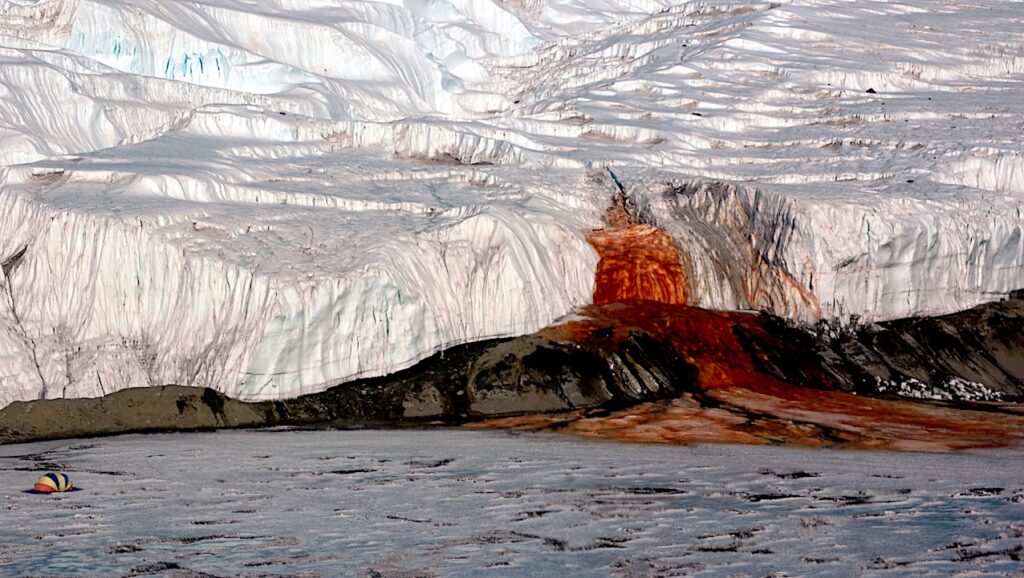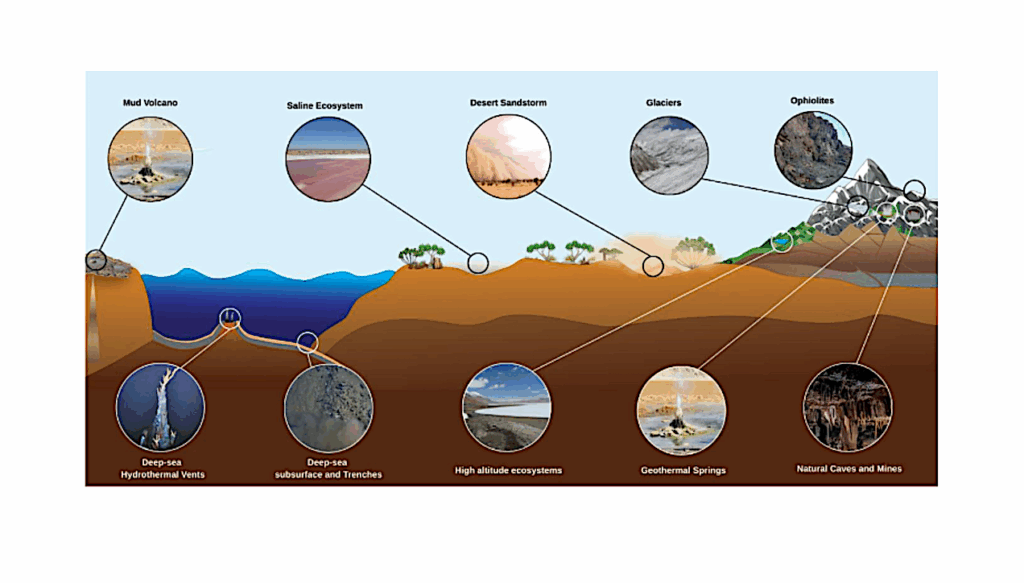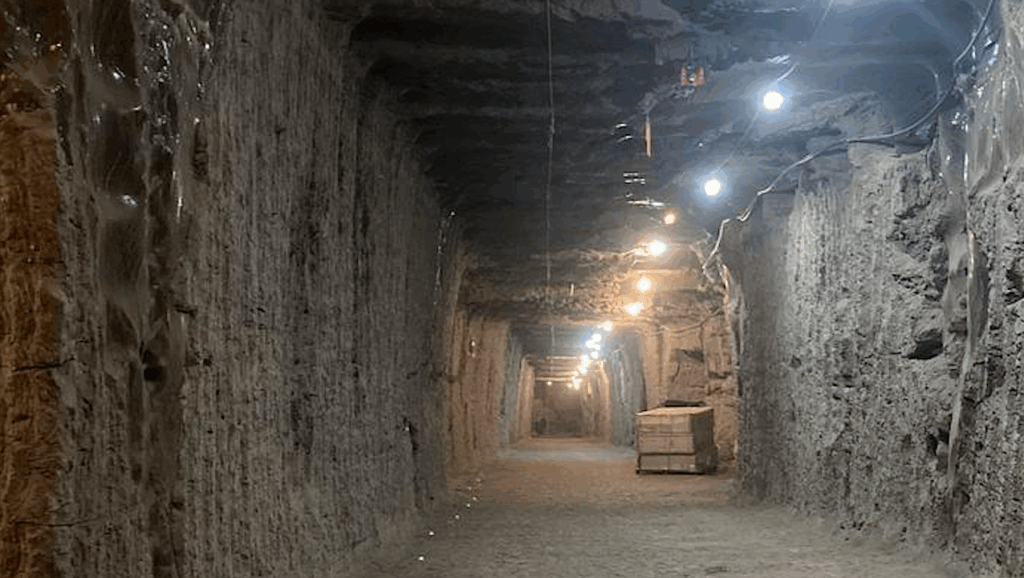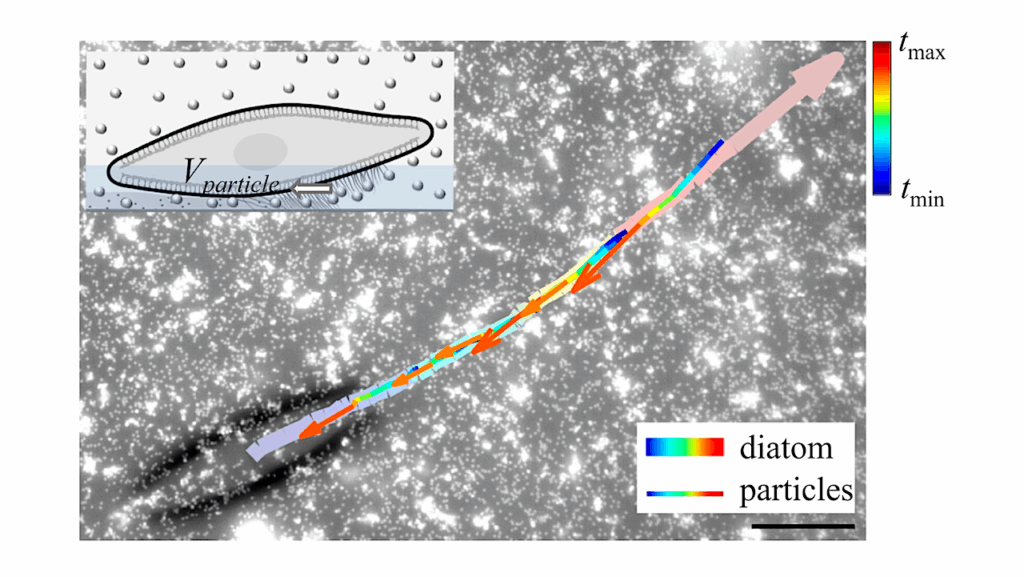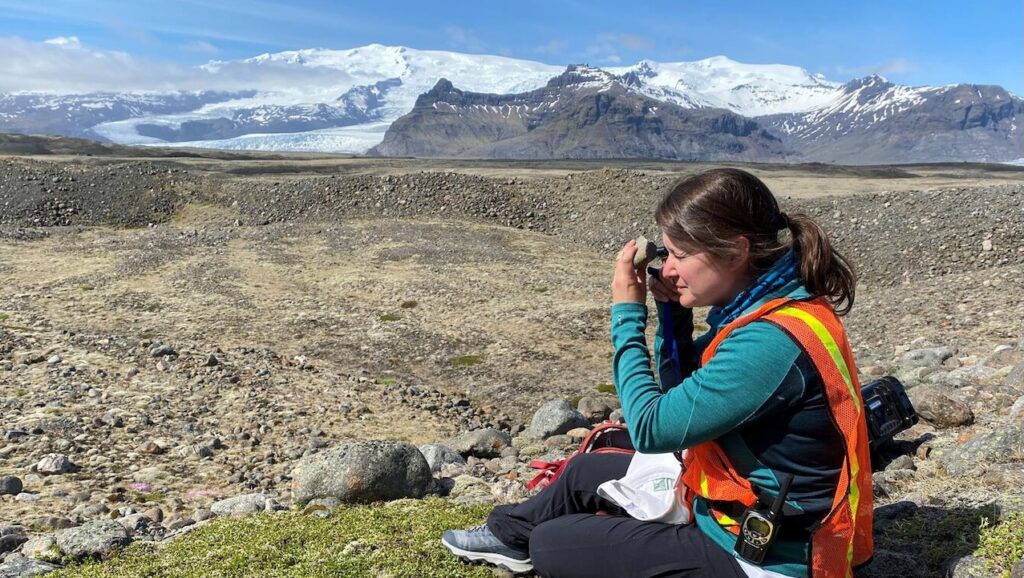The First Amber Found In Antarctica

Roughly 90 million years ago, climatic conditions in Antarctica were suitable for resin-producing trees. A team of researchers led by the Alfred Wegener Institute and the TU Bergakademie Freiberg have just released a paper in the journal Antarctic Science, in which they describe the southernmost discovery of amber in the world.
Until recently, a gap existed in the world map of amber discoveries: the Antarctic continent. But that gap has finally been closed, thanks to a team led by Dr Johann P. Klages from the Alfred Wegener Institute, Helmholtz Centre for Polar and Marine Research and Dr Henny Gerschel from the TU Bergakademie Freiberg.
In a recently released paper, the experts describe the amber they discovered in a sediment core they had recovered on an expedition with the research icebreaker Polarstern in 2017, using the seafloor drill rig MARUM-MeBo70 at a water depth of 946 metres. They have named the discovery “Pine Island amber” after its locality in the Pine Island Bay of the Amundsen Sea Embayment – at 73.57° South, 107.09° West, to be precise.

Southern Hemisphere continental configuration ~90 million years ago, including sites of southernmost amber finds: the ‘Otway amber’ (green cross; Quinney et al. Reference Quinney, Mays, Stilwell, Zelenitsky and Therrien2015), the Tupuangi amber (yellow cross; Mays et al. Reference Mays, Cantrill and Bevitt2017) and the ‘Pine Island Amber’ described in this study (red cross; it remains largely unclear which parts of the indicated continents were submerged or exposed land). — Antarctic Science
“The analysed amber fragments allow direct insights into environmental conditions that prevailed in West Antarctica 90 million years ago,” says first author Johann P. Klages. “This fascinating find also indicates in more detail how the forest we reconstructed in our Nature study from 2020 could have functioned,” the AWI marine geologist adds.
“It was very exciting to realise that, at some point in their history, all seven continents had climatic conditions allowing resin-producing trees to survive. Our goal now is to learn more about the forest ecosystem – if it burned down, if we can find traces of life included in the amber. This discovery allows a journey to the past in yet another more direct way.”
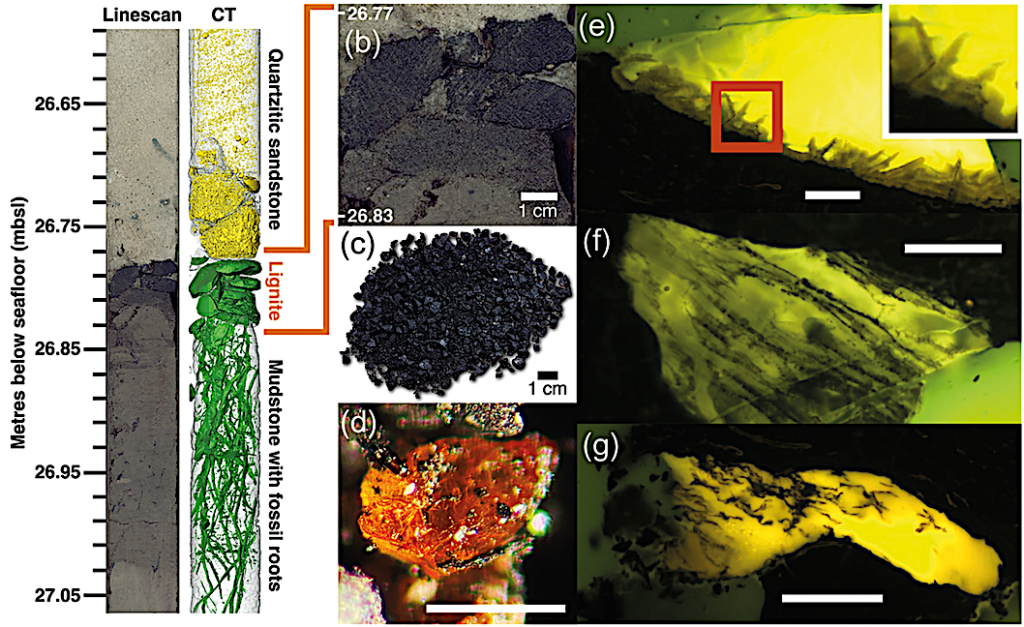
b. Lignite layer on top of carbonaceous mudstone at MeBo drill site PS104_20 (depth range below seafloor indicated); see Klages et al. (Reference Klages, Salzmann, Bickert, Hillenbrand, Gohl and Kuhn2020) for further stratigraphic context. c. Crushed, air-dried lignite fragments. d. Photograph of sand-sized amber (V. Schumacher, Alfred Wegener Institute). e. Photomicrograph of an amber piece with micro-inclusions (probably tree bark remains) at the transition from lignite to amber (see inset). f. & g. Photomicrographs of amber pieces with indications of pathological resin flow. Scale bars in d.–g. are 50 μm. CT = computed tomography scan. — Antarctic Science
Those expecting large clumps of amber have to be disappointed: For analyses with reflected-light and fluorescence microscopy, the source material had to be air-dried and carefully sliced up into roughly fragments with 1 mm diameter from which the amber pieces were picked.
But nevertheless, exciting structures were to be found: “The Antarctic amber likely contains remains of original tree bark as micro-inclusions. Considering its solid, transparent and translucent particles, the amber is of high quality, indicating its burial near the surface, as amber would dissipate under increasing thermal stress and burial depth,” explains Henny Gerschel, until recently a member of staff at the TU Bergakademie Freiberg and now a consultant at the Saxon State Office for the Environment, Agriculture and Geology.
The team also found indications for pathological resin flow – a strategy trees use to seal damaged bark induced by parasites or wildfires, hence creating a chemical and physical barrier protecting from insect attacks and infections.
“Our discovery is another piece of the puzzle and will help us gaining a better understanding of the swampy, conifer-rich, temperate rainforest environment identified near the South Pole during the mid-Cretaceous.”
First discovery of Antarctic amber, Antarctic Science
Astrobiology


